Shore Larks are one of our most charismatic winter visitors, with their bright yellow faces and small black ‘horns’. They come to the UK from their breeding grounds in the Fennoscandian mountains. Through the winter here they are almost exclusively coastal, feeding on saltmarsh edge or along the tideline. Norfolk is one of the best places in the UK to see them.
Unfortunately, the wintering population in the UK has declined dramatically since the 1980s, mirroring a fall in the Fennoscandian breeding population. Flocks of up to 50-100 Shore Larks were not unusual here in years gone by, but seem to be a thing of the past. They also appear to have abandoned some of their traditional wintering sites here, which may be partly due to disturbance. However, small numbers do continue to overwinter in Norfolk, for the time being at least.
At the time of writing, a small party of three Shore Larks has taken up residence at Thornham Harbour. They are well worth seeing!

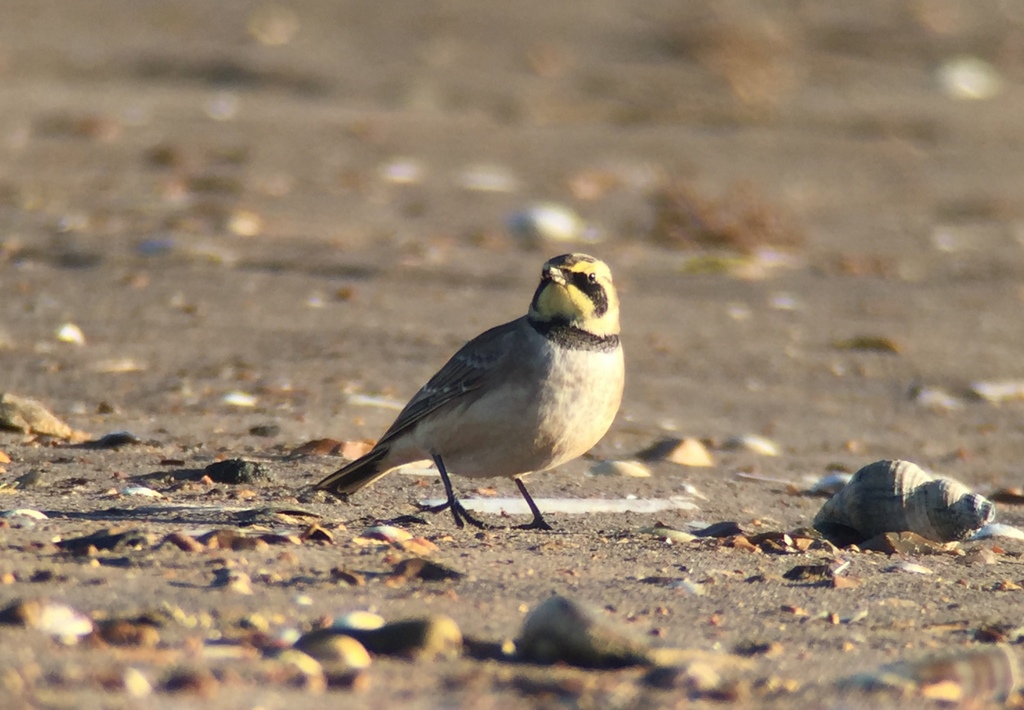
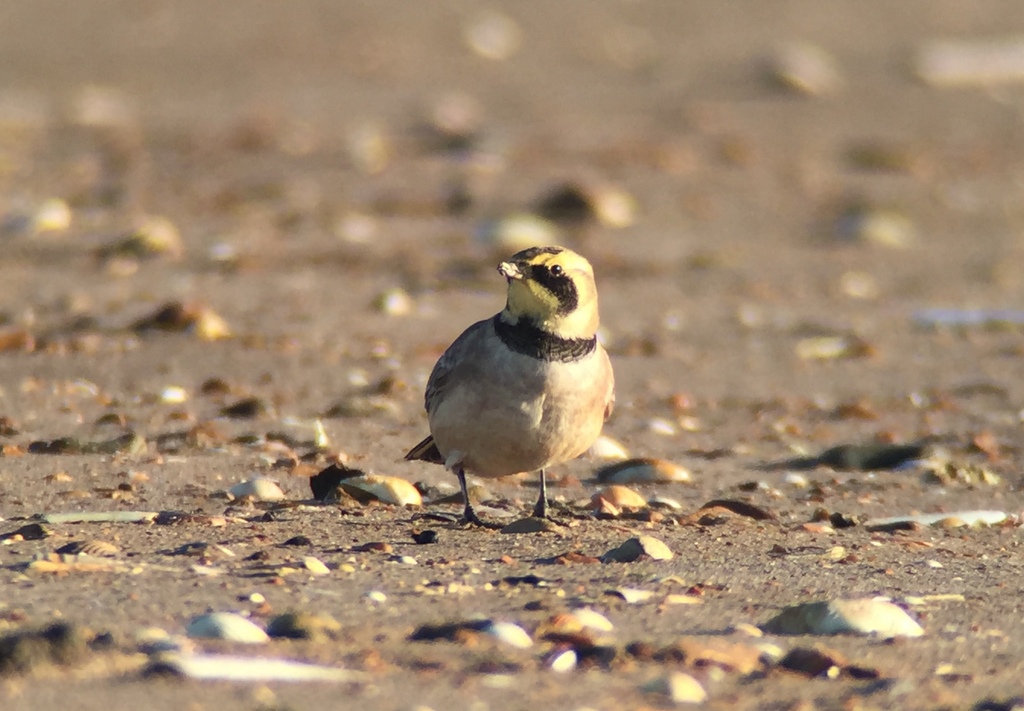
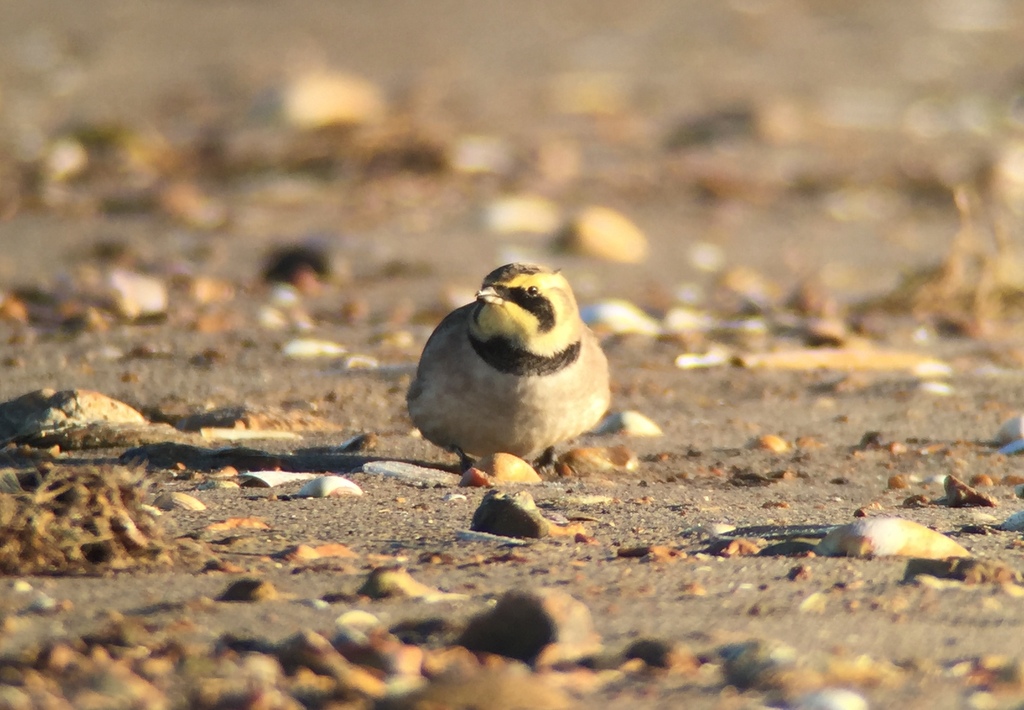 Shore Lark – one of the three birds at Thornham Harbour
Shore Lark – one of the three birds at Thornham Harbour
The small black ‘horns’ are formed by elongated feathers on the side of the crown. They are longest on the male, but can be hard to see when they are not raised.
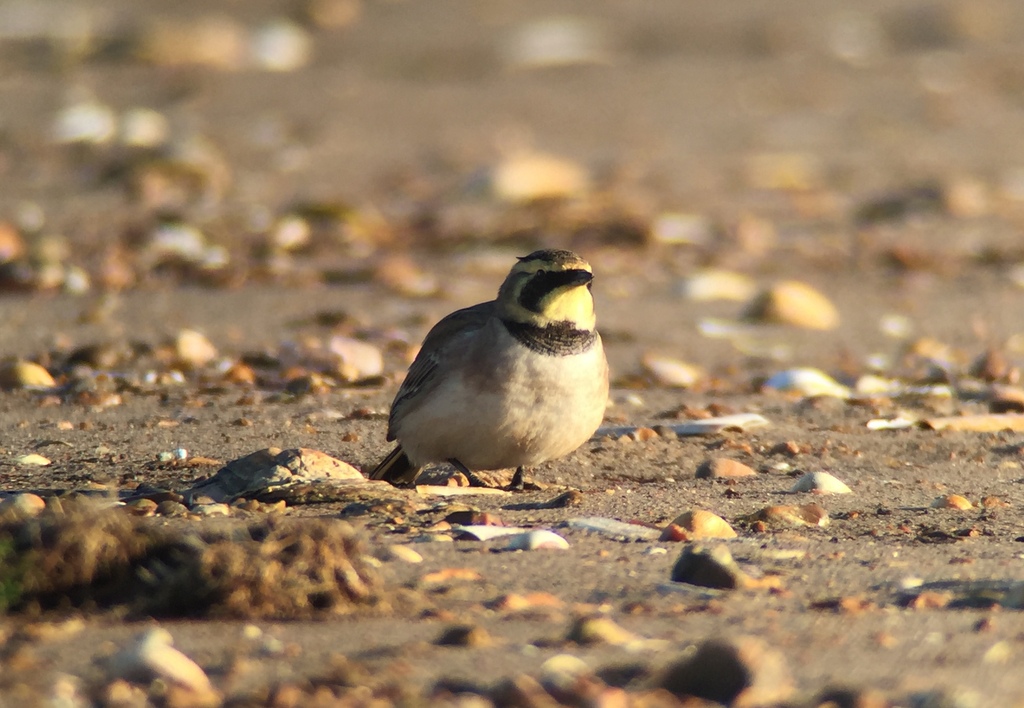 Shore Lark – the small ‘horn’ on the back of the crown is just visible
Shore Lark – the small ‘horn’ on the back of the crown is just visible
Of the three birds at Thornham, the one photographed above, was noticeably paler below than the other two and comparatively unmarked on the lower breast. It also appeared to have a subtly brighter face pattern and more solidly dark cheeks and upper breast. Its horns were more obvious and it also appeared to be more dominant. Shore Larks are difficult to age/sex, but this would appear to be a male.
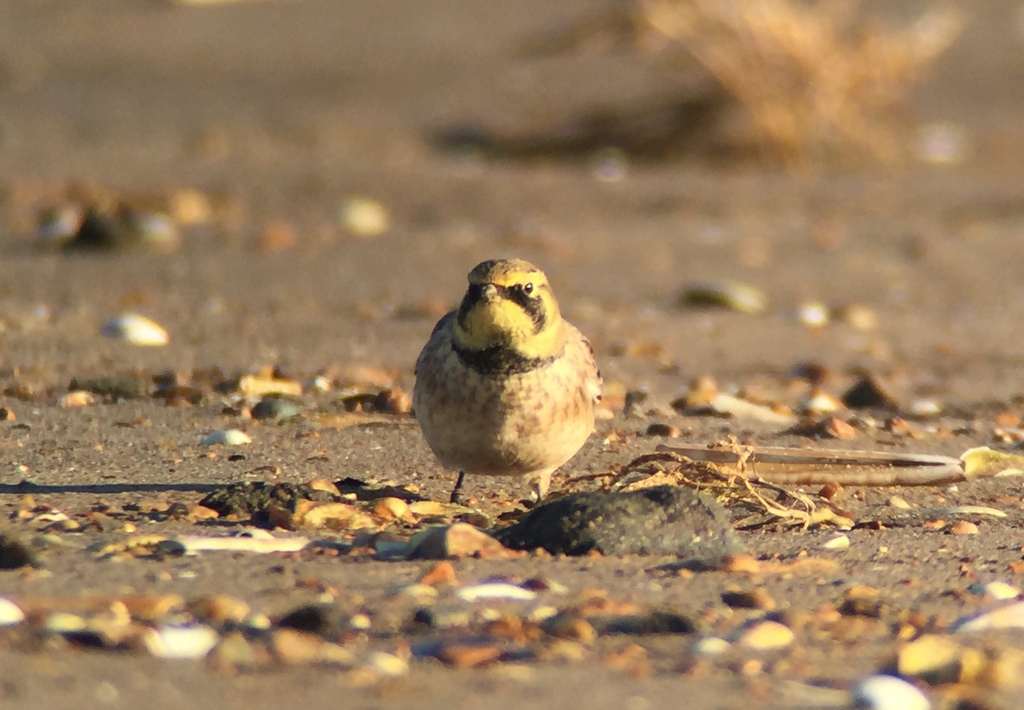
 Shore Larks – the other two birds were more marked below
Shore Larks – the other two birds were more marked below
Today the Shore Larks were on the edge of the beach, on an open stony area which has started to be colonised by saltmarsh vegetation. They fed by looking for seeds, running between the tufts of vegetation before stopping to pick around them.
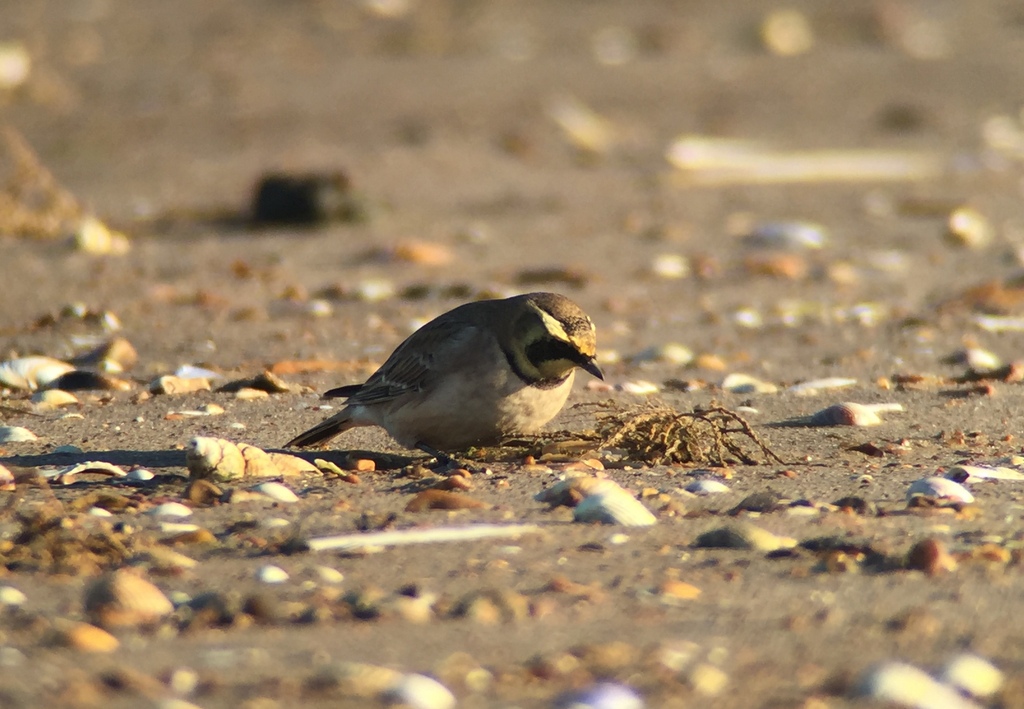 Shore Lark – looking for seeds around the tufts of vegetation
Shore Lark – looking for seeds around the tufts of vegetation
It was rather too windy out on the exposed beach today, but some rather shaky video below gives a good impression of how they feed.
If the birds stay around, this is one of the species we will look for on our Winter Tours. If you would like to come looking for them, please contact us for more details or have a look at the website.
















